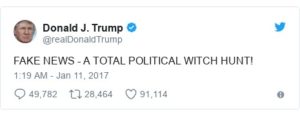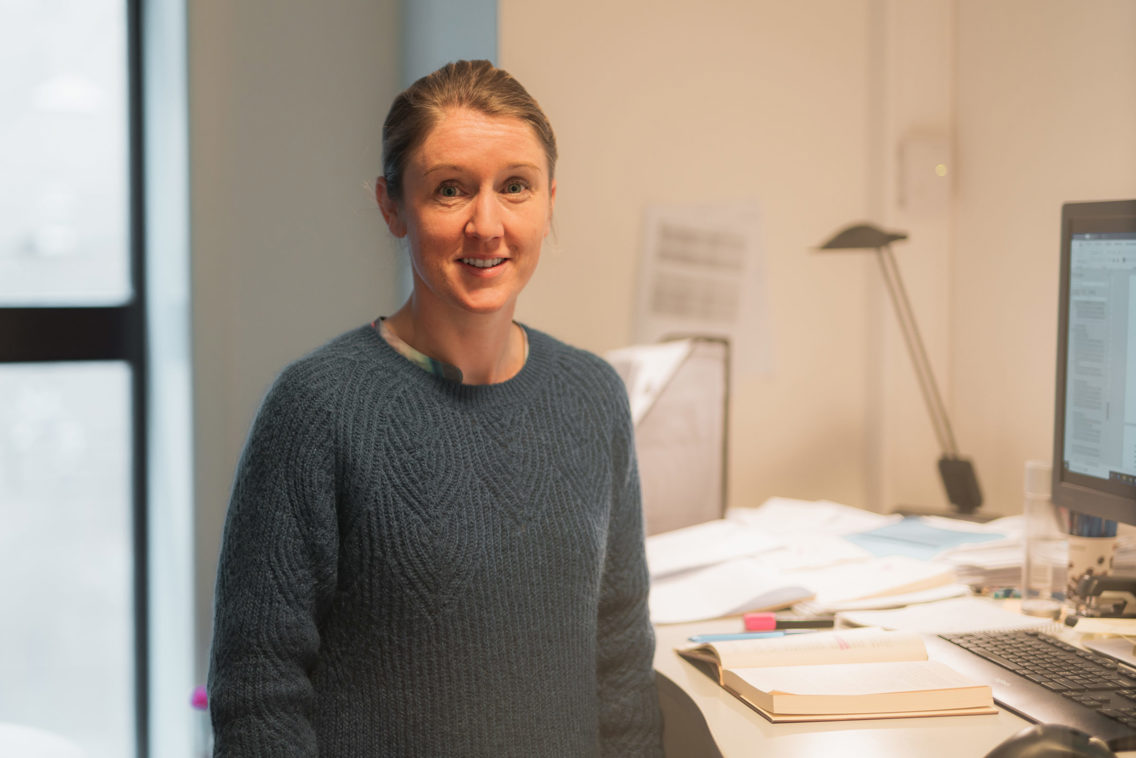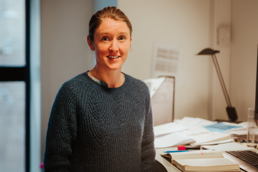Fighting Fake News
-
Sist oppdatert
23. november 2020
-
Kategori
-
Tema
- Fake News
- Kildekritikk
- Utdanning
- Pedagogikk
How can teachers in higher education help students navigate fake news and the post-truth era? Six questions to be asked when designing teaching.
KNOWLEDGE @ KRISTIANIA: Teaching
If there is one term that has dominated in media during the last years, it is “fake news”.
“Fake news” refers to false information that is disseminated with dishonest intent. In addition, and most dangerously, fake news resembles accurate (validated, or fact-checked) news, but rather originates from non-trustworthy or dubious sources.
Fake news is a type of disinformation, and can be contrasted with misinformation that refers to spreading false information in good faith, with intent to inform rather than deceive.
- Read also: Kunnskap Kristiania 2020/2021 (E-magazine).
Designed to look real

The spreading of false information that is designed to look real is not a new phenomenon, but the rate at which it can be produced, distributed and accessed by the public, are. In combination with other factors, this has led to the dawn of the “post-truth era” (Sinatra & Lombardi, 2020).
A defining feature of the post-truth era is that many people are inclined to rely on their own beliefs rather than scientific knowledge, and even prominent figures, such as presidents, allegedly invent their own truths.
«Let me google that for you»
Many higher education students are digital natives – the generation that have grown up with the Internet and Google at their fingertips. What’s more, these students may believe that facts, and thereby knowledge, are social constructions, and, in turn, all truths are relative.
The same students have also been taught source evaluations skills in schools, but they may often fail to use these skills in daily life or in meeting with higher education courses. What’s more, fake news proliferators are so advanced that the skills students have been taught are becoming increasingly difficult to apply, redundant even.
Modern digital technology allows “anyone” to publish and share information. Due to the rate at which this occurs, the “self-cleansing” nature of the internet, where people can edit and correct one another’s mistakes, is “out of order”.
Also, many search-engines work in a way that means that the first hits on a search result are not always the most scientifically objective, but rather likely to be paid advertisements. In other words, students who simply choose the first result that their search engine provides are likely to gain a skewed view of the issue in question.
- Read also: Farene ved falske nyheter (in Norwegian)
“Everyone’s entitled to an opinion”
Educational attempts to keep pace with societal advances, like teaching about critical source intervention, may be inadequate (Sinatra & Lombardi, 2020). For example, it is no longer sufficient to study the “about” information on websites, since this can easily be manipulated.
Additionally, people and organisations in positions of authority may spread misinformation in good faith, so defaulting to trusting an authority may no longer work. In the face of this, students may experience feelings of frustration or a lack of trust in authority.
- Read also: Tsunami av falske nyheter, rykter og desinformasjon (in Norwegian)
Students that hold stances such as “all opinions are equal”, “all knowledge is uncertain and created by human minds”, “critical thinking and attention to source information are (therefore) irrelevant”, is the stuff of educational research on epistemic beliefs. Epistemic beliefs are beliefs about knowledge and the process of knowing.
“Everything’s broken”
Traditionally, researchers have found that students progress through stages from viewing the world and it’s knowledge from categorical, right-or-wrong thinking, to anything-goes and everyone is entitled to an opinion, and eventually (hopefully) where students judge knowledge claims according to criteria like argument and evidence, and employ critical thinking and source evaluation.
We now know that views like this develop in relation to specific knowledge domains, or topics, and that higher education seems to help this process. But could this progress be threatened or slowed down by fakes news and alternative facts, and lead to feelings that “everything’s broken”?
- Read also: Bruker falske nyheter for å slå ned på ytringer som ikke faller i smak (in Norwegian)
How teachers can help students
Source evaluation skills such as paying attention to who said what, based on what evidence and for what reason, as well as noting the author’s expertise continue to be vital.
Students also need to learn that although everyone is entitled to an opinion, some opinions are better qualified than others, as well as understanding the importance of validating claims by cross-checking information sources.
But in addition, students need to learn to think critically and analytically about claims, sources, and the links between, to compose and evaluate reasoned arguments, and develop understanding of methods and how to interpret research results.
To be able to use these skills in relation to their studies and everyday life, they should be taught in context, as part of higher education courses, and not as a generic “study skills class”.
Higher education teachers’ main foci are the subject they teach and their students’ well-being. Academic success and well-being in terms of being informed and making good decisions need time to develop. Some questions higher education teachers might ask themselves when considering how to help students to learn to navigate an alternative fact world are:
- How can I ensure that students are gradually introduced to the complexities of my subject?
- How can I help students see that knowledge claims are interconnected, developing and sometimes conflicting?
- What background knowledge do students need to be able to navigate (potentially false) claims in my subject?
- Can I include multiple (even conflicting) information resources to help shed light on phenomena from different sides and help students understand how different perspectives can co-exist?
- How can I show students that different authors have different beliefs that influence how they interpret issues and relations between them?
- Can I help students to gain an understanding of the processes researchers and scientists use to arrive at valid knowledge claims, for example, by including them in my own research?
This list is not exhaustive and should be adapted to the intricacies of teachers’ specialist fields of knowledge, with the same being true of the teaching methods that educators use.
Some suggestions for teaching include: starting discussions where students are asked to adopt different perspectives and argue a case that they don’t necessarily believe, inviting guest lecturers with clashing views or presenting findings from different research paradigms as ways to improve perspective-taking and argumentation skills.
Involvement in designing research projects, collecting and analysing data, and communicating results will also help improve students’ understanding of what research reports mean and how results can be misrepresented, or even faked.
References:
- Greene, J. A., Sandoval, W. A., & Bråten, I. The handbook of epistemic cognition, New York, NY: Routledge.
- Kendeou, P., Robinson, D. H., & McCrudden, M. T. (Eds.). (2019). Misinformation and fake news in education. Charlotte, NC: Information Age Publishing.
- Kuhn, D., Cheney, R., & Weinstock, M. (2000). The development of epistemological understanding. Cognitive Development, 15, 309-328.
- Sinatra, G. M., & Lombardi, D. (2020). Evaluating sources of scientific evidence and claims in the post-truth era may require reappraising plausibility judgments. Educational Psychologist, 55, 120-131.
- Wendling, M. The (almost) complete history of ‘fake news’ (22.01.18) https://www.bbc.com/news/blogs-trending-42724320.
This popular article is first published in Kunnskap Kristiania 2020/2021. Kunnskap Kristiania is a science Communication Magazine published by Kristiania University College.
Text: Professor Leila Ferguson, School of Health Sciences at Kristiania University College.

